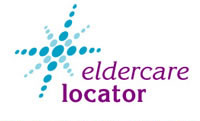|
Millions of seniors in the U.S. are missing out on more than $20 billion in aid that could help pay for food, medicine and utilities, simply because they don't know it's there.
To help with this ongoing problem, the National Council on Aging (NCOA) and the National Association of Area Agencies on Aging (n4a) are promoting two key resources to help seniors track down government benefits and financial assistance programs that they might be eligible for, and will show them how to apply. If you or your elder loved one is struggling financially, here's how you can find help more easily.  Online Search Online SearchIf you have access to the Internet, the easiest and most convenient way to search for benefits for seniors is at benefitscheckup.org. Created by the NCOA 10 years ago, BenefitsCheckUp is a free, confidential web-based service that helps low-income seniors and their families identify federal, state and private benefits programs that can help with prescription drug costs, health care, utilities, and other basic needs. This site contains more than 2,000 programs across the country. To help identify benefits that could help you, you'll need to fill out an online questionnaire that asks things like your date of birth, zip code, expenses, income, assets, veteran status and a few other factors. It takes about 15 minutes to complete. Once completed, you'll get a report detailing all programs and services you may be eligible for. You can also apply for many of the programs online, or you can print an application form, fill it out and mail it in.  Phone Help Phone HelpIf, however, you don't have Internet access you can also get help over the phone by calling the Eldercare Locator (800-677-1116), which will assign you a counselor to review your situation, and provide you with a list of possible programs you may be eligible for, and who to contact to get the ball rolling. Types of Benefits Depending on your income level and where you live, some of the different benefits that may be available to you include: Food Assistance: Programs like the Supplemental Nutrition Assistance Program (SNAP) can help pay for your groceries. The average monthly SNAP benefit is currently $119 for seniors living alone. Other programs that may help include the Emergency Food Assistance Program, Commodity Supplemental Food Program, and the Senior Farmers' Market Nutrition Program. Health Assistance: Medicaid and Medicare Savings Programs can help or completely pay for out-of-pocket health care costs. And, there are special Medicaid waiver programs that provide in-home care and assistance. Prescription Assistance: There are hundreds of programs offered through pharmaceutical companies, government agencies and charitable organizations that help lower or eliminate prescription drug costs, including the federal Low Income Subsidy known as "Extra Help" that pays premiums, deductibles and prescription copayments for Medicare Part D beneficiaries. Heating and Cooling Assistance: There's the Low Income Home Energy Assistance Program (LIHEAP), as well as local utility companies and charitable organizations that provide assistance in lowering home heating and cooling costs. Supplemental Security Income (SSI): Administered by the Social Security Administration, SSI provides monthly payments to very low income seniors, age 65 and older, as well as to those who are blind and disabled. The average SSI payment is around $500 per month. In addition to these programs, there are numerous other benefits such as HUD housing options, home weatherization assistance, tax relief, various veteran's benefits, transportation, respite care and free legal assistance. |
Stay informed with our free Senior Newswire service





